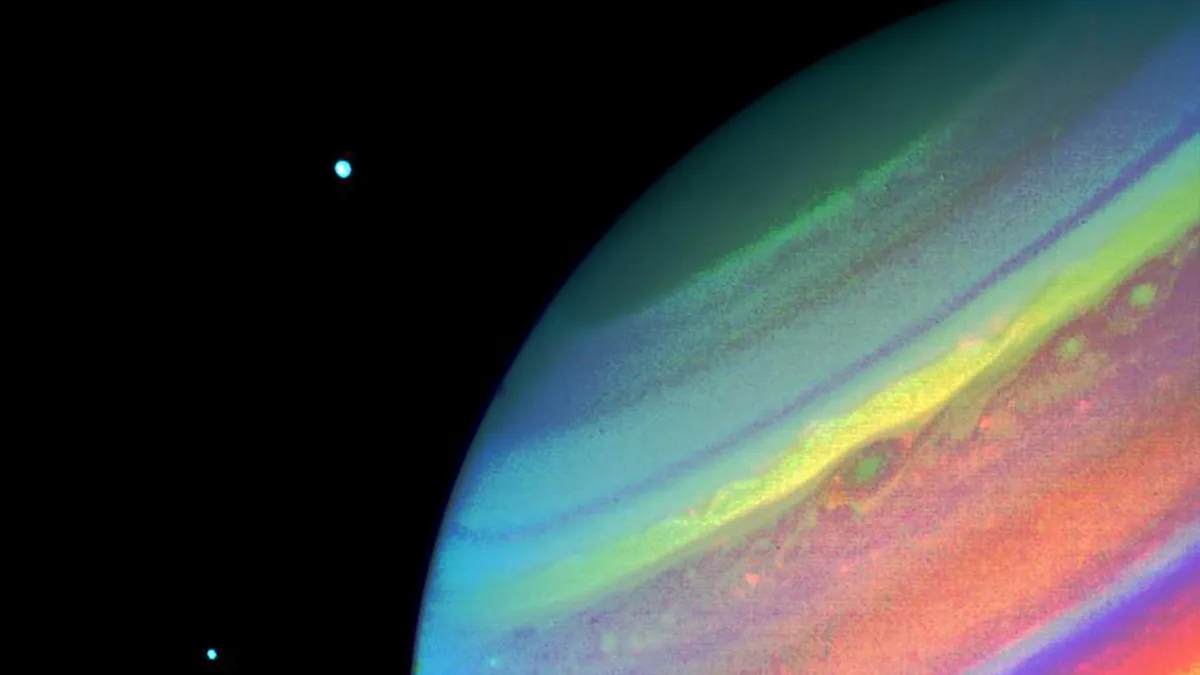Voyager 2 detected a storm on Saturn 42 years ago
- September 17, 2023
- 0
The ringed planet is now in a perfect position to be observed with a small telescope; Relive Voyager 2’s unforgettable visit in 1981. What is: Saturn, the seventh
The ringed planet is now in a perfect position to be observed with a small telescope; Relive Voyager 2’s unforgettable visit in 1981. What is: Saturn, the seventh

The ringed planet is now in a perfect position to be observed with a small telescope; Relive Voyager 2’s unforgettable visit in 1981.
What is: Saturn, the seventh planet from the Sun, as seen by NASA’s Voyager 2 spacecraft
Shooting date: 11 August 1981
Where: 886 million miles (1.4 billion kilometers) from the Sun is 9.5 times the Earth-Sun distance
Why it’s so special: This false-color image taken 42 years ago this month by NASA’s Voyager 2 probe shows convective clouds and storms in Saturn’s northern hemisphere. The moons Dione and Enceladus are visible on the right; Recent observations using the James Webb Space Telescope show that they are spewing huge amounts of water vapor into space.
The image was taken 9 million miles (15 million km) from Earth as Voyager 2 approached the ringed planet using the spacecraft’s VG ISS Narrow Angle instrument. The false color image was stitched together from UV, violet and green images using filters to make it visible to the human eye. If you look below the band of yellow clouds (which are actually white), you will see a green area (which is actually brown) representing the storm. Voyager 2 measured wind speeds at Saturn’s equator at 1,100 mph (1,770 km/h).
Voyager 2 was not the first probe to image Saturn. That distinction goes to Pioneer 11, one of NASA’s first solar system probes, launched in 1973 to study Jupiter, Saturn, and the asteroid belt as references for the Voyager missions.
Nor was Voyager 2 the first of two Voyager probes to photograph a ringed planet. Its twin, Voyager 1, reached Saturn in November 1980, and Voyager 2 visited nine months later, making its closest approach on August 26, 1981. However, since Voyager 2 had more sensitive cameras, it could detect many more features. in Saturn’s turbulent atmosphere, according to NASA.
How to see it in the night sky: Now is the time to see Saturn, but you’ll need a good telescope to spot its rings. The ringed planet is currently at its biggest, brightest and best of the year, reaching opposition (when the Earth is between it and the sun) on August 27. Saturn is currently in the constellation Aquarius and rises in the east at dusk. Source
Source: Port Altele
As an experienced journalist and author, Mary has been reporting on the latest news and trends for over 5 years. With a passion for uncovering the stories behind the headlines, Mary has earned a reputation as a trusted voice in the world of journalism. Her writing style is insightful, engaging and thought-provoking, as she takes a deep dive into the most pressing issues of our time.